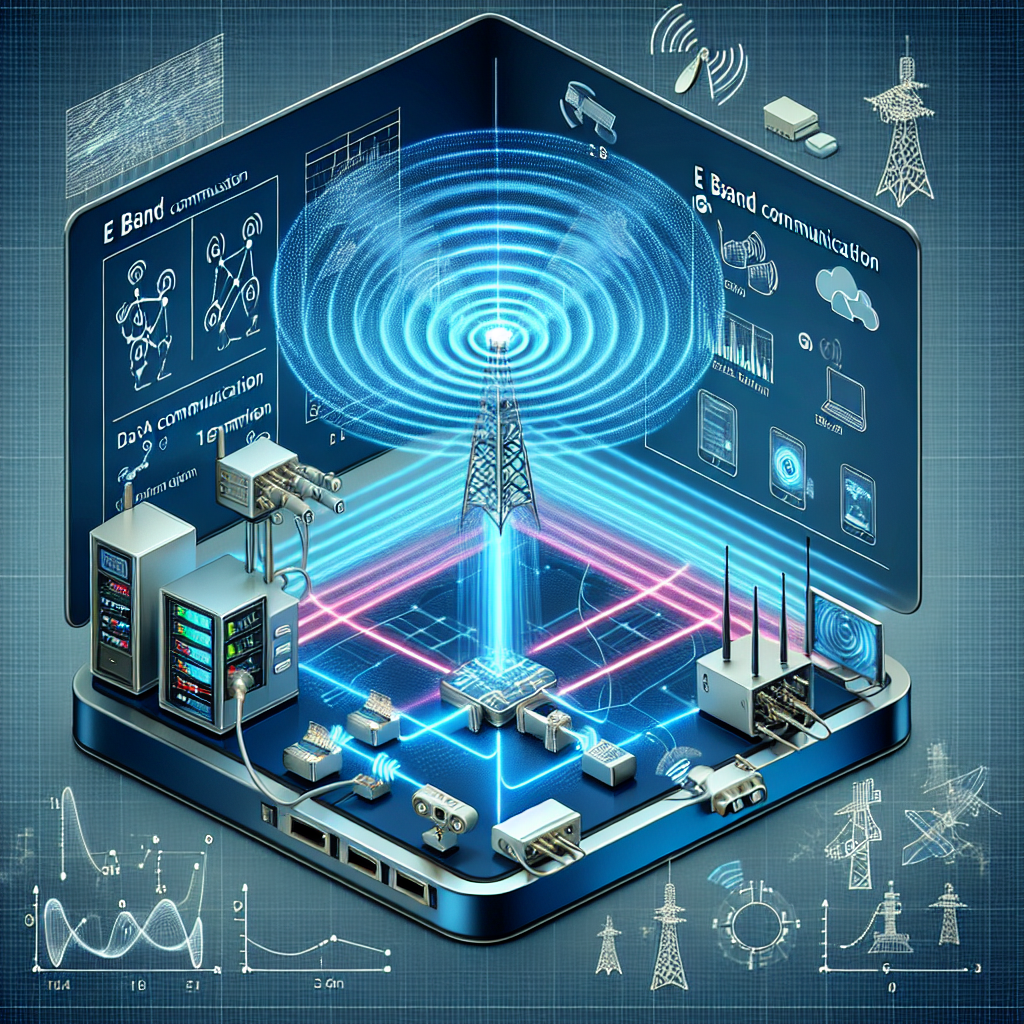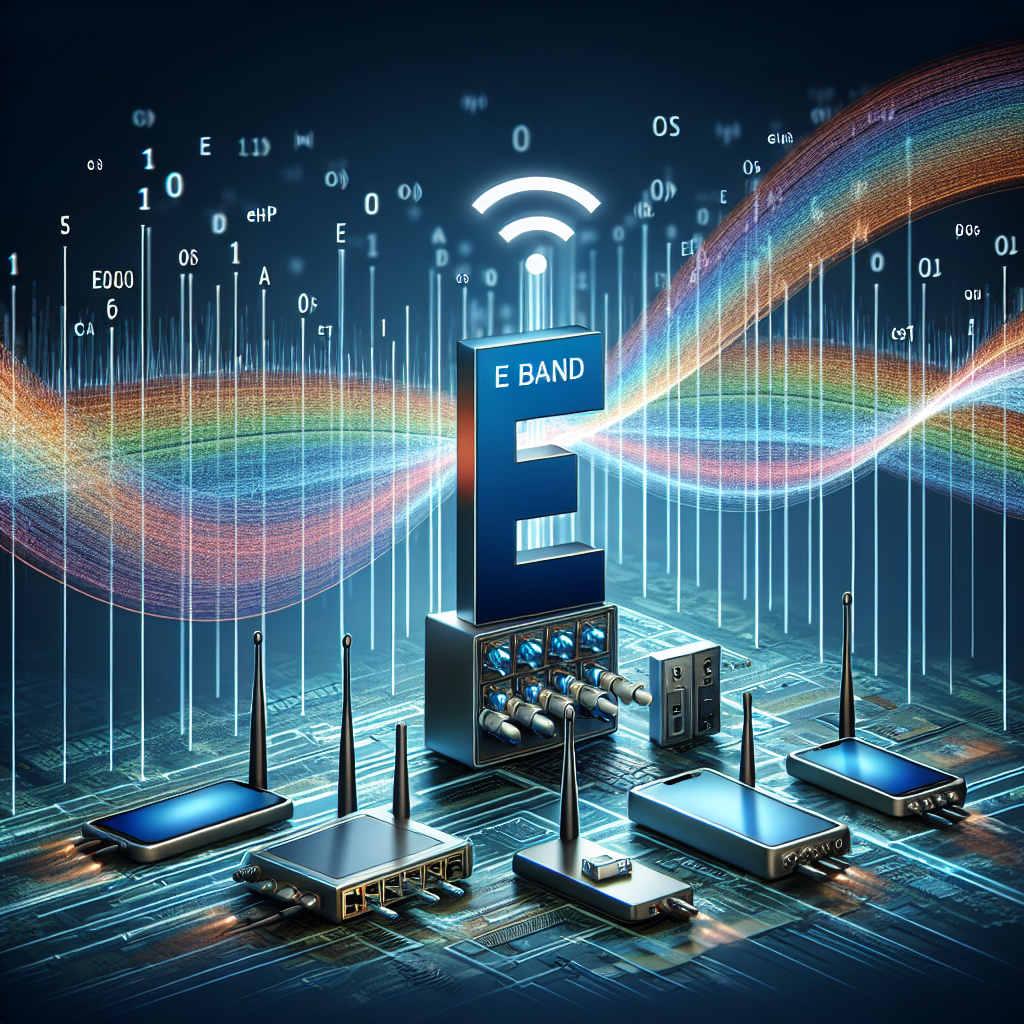UK Police Still Holding Millions of Custody I
UK Police Still Holding Millions of Custody Images With...

The evolution of Huawei E Band technology in high-frequency communication has been a significant milestone in the telecommunications industry. As the demand for higher data rates and more efficient spectrum utilization continues to grow, the need for advanced communication technologies becomes increasingly critical. Huawei, a global leader in telecommunications, has been at the forefront of developing E Band technology, which operates in the 70/80 GHz frequency range. This technology has revolutionized high-frequency communication by providing unprecedented data transfer speeds and improved network performance.
Initially, the telecommunications industry relied heavily on lower frequency bands for communication. However, these bands became increasingly congested as the number of connected devices and data traffic surged. Consequently, the industry began exploring higher frequency bands, such as the E Band, to alleviate congestion and meet the growing demand for bandwidth. Huawei recognized the potential of E Band technology early on and invested heavily in research and development to harness its capabilities.
One of the primary advantages of E Band technology is its ability to support high-capacity data transmission. The 70/80 GHz frequency range offers a wide bandwidth, enabling data rates of up to 10 Gbps or more. This is particularly beneficial for applications that require large amounts of data to be transmitted quickly, such as high-definition video streaming, cloud computing, and real-time data analytics. By leveraging E Band technology, Huawei has been able to provide solutions that cater to these high-bandwidth requirements, ensuring seamless and efficient communication.
Moreover, E Band technology offers low latency, which is crucial for applications that demand real-time responsiveness. In industries such as autonomous driving, telemedicine, and industrial automation, low latency is essential to ensure the timely exchange of information and the smooth operation of critical systems. Huawei’s E Band solutions have been designed to minimize latency, thereby enhancing the performance and reliability of these applications.
In addition to high capacity and low latency, E Band technology also provides improved spectrum efficiency. The 70/80 GHz frequency range is less congested compared to lower frequency bands, allowing for more efficient use of the available spectrum. This is particularly important in urban areas where spectrum resources are limited and the demand for wireless communication is high. By utilizing E Band technology, Huawei has been able to optimize spectrum usage, ensuring that more users can benefit from high-speed connectivity without experiencing interference or degradation in service quality.
Furthermore, Huawei’s E Band technology has been instrumental in the deployment of 5G networks. The high-frequency characteristics of E Band make it an ideal candidate for backhaul solutions in 5G networks, where large amounts of data need to be transmitted between base stations and the core network. By integrating E Band technology into their 5G infrastructure, Huawei has been able to support the high data rates and low latency requirements of 5G, paving the way for the next generation of wireless communication.
In conclusion, the evolution of Huawei E Band technology in high-frequency communication has had a profound impact on the telecommunications industry. By addressing the challenges of congestion, bandwidth demand, and spectrum efficiency, Huawei has positioned itself as a leader in high-frequency communication solutions. The advancements in E Band technology have not only enabled faster and more reliable data transmission but have also played a crucial role in the deployment of 5G networks. As the demand for high-frequency communication continues to grow, Huawei’s E Band technology will undoubtedly remain a key enabler of future innovations in the telecommunications landscape.

The Role of Huawei E Band in High-Frequency Communication
In the rapidly evolving landscape of telecommunications, the demand for high-frequency data transmission has never been more critical. As the world becomes increasingly interconnected, the need for efficient, reliable, and high-capacity communication systems is paramount. One of the key players in this domain is Huawei, whose E Band technology has emerged as a significant contributor to high-frequency communication. The benefits of using Huawei E Band for high-frequency data transmission are manifold, and understanding these advantages can provide valuable insights into the future of telecommunications.
Firstly, Huawei E Band technology offers exceptional data transmission rates, which are essential for meeting the growing demands of modern communication networks. The E Band operates in the frequency range of 71-76 GHz and 81-86 GHz, allowing for the transmission of large volumes of data at incredibly high speeds. This capability is particularly beneficial for applications that require real-time data transfer, such as video conferencing, online gaming, and cloud computing. By leveraging the high-frequency spectrum, Huawei E Band ensures that data is transmitted quickly and efficiently, reducing latency and enhancing the overall user experience.
Moreover, the high-frequency nature of Huawei E Band technology enables it to support a higher density of communication links within a given area. This is particularly advantageous in urban environments, where the demand for wireless communication is at its peak. Traditional communication bands often face congestion issues due to the limited availability of frequencies. However, the E Band’s higher frequency range allows for more channels to be utilized simultaneously, thereby alleviating congestion and improving network performance. This increased capacity is crucial for supporting the ever-growing number of connected devices in smart cities and other densely populated areas.
In addition to its high data transmission rates and increased capacity, Huawei E Band technology also offers superior reliability and stability. High-frequency signals are less susceptible to interference from other electronic devices, which is a common issue in lower frequency bands. This reduced interference translates to more stable and reliable communication links, ensuring that data is transmitted without interruptions. Furthermore, Huawei’s advanced error correction algorithms and robust modulation techniques enhance the resilience of E Band communication systems, making them well-suited for mission-critical applications where reliability is paramount.
Another significant benefit of Huawei E Band technology is its cost-effectiveness. While the initial investment in E Band equipment may be higher compared to traditional communication systems, the long-term benefits far outweigh the costs. The increased data transmission rates and higher capacity reduce the need for additional infrastructure, resulting in lower operational expenses. Additionally, the improved reliability and stability of E Band communication systems minimize maintenance costs and downtime, further contributing to cost savings. For telecommunications providers, these economic advantages make Huawei E Band an attractive option for expanding and upgrading their networks.
Furthermore, Huawei E Band technology is highly scalable, making it an ideal solution for future-proofing communication networks. As the demand for high-frequency data transmission continues to grow, the ability to scale up network capacity and performance becomes increasingly important. Huawei’s E Band solutions are designed to be easily integrated with existing infrastructure, allowing for seamless upgrades and expansions. This scalability ensures that communication networks can adapt to evolving technological requirements and continue to deliver high-quality service to users.
In conclusion, the benefits of using Huawei E Band for high-frequency data transmission are numerous and significant. From exceptional data transmission rates and increased capacity to superior reliability, cost-effectiveness, and scalability, Huawei E Band technology addresses the critical needs of modern communication networks. As the telecommunications industry continues to advance, the role of Huawei E Band in high-frequency communication will undoubtedly become even more prominent, paving the way for a more connected and efficient world.
The implementation of Huawei E Band in high-frequency networks presents a myriad of challenges and solutions that are critical to the advancement of modern telecommunications. As the demand for higher data rates and more efficient spectrum utilization continues to grow, the E Band, which operates in the 71-76 GHz and 81-86 GHz frequency ranges, has emerged as a promising solution. However, the deployment of this technology is not without its obstacles.
One of the primary challenges in implementing Huawei E Band for high-frequency networks is the issue of signal attenuation. High-frequency signals are inherently more susceptible to atmospheric absorption and rain fade, which can significantly degrade signal quality over long distances. This attenuation is particularly pronounced in the E Band frequencies, necessitating the development of robust solutions to mitigate these effects. To address this, Huawei has invested in advanced modulation techniques and adaptive coding schemes that enhance signal resilience. These technologies dynamically adjust the signal parameters in response to changing environmental conditions, thereby maintaining a stable and reliable connection.
Another significant challenge is the limited range of E Band signals. Due to their high frequency, these signals have a shorter propagation distance compared to lower frequency bands. This limitation requires a denser network of base stations and relay points to ensure comprehensive coverage. Huawei has tackled this issue by designing compact and cost-effective E Band transceivers that can be easily deployed in urban environments. These transceivers are equipped with high-gain antennas that focus the signal beam, thereby extending the effective range and improving overall network performance.
Interference management is also a critical concern in high-frequency communication. The E Band spectrum, while less congested than lower frequency bands, still faces potential interference from other high-frequency devices and systems. To mitigate this, Huawei has developed sophisticated interference detection and mitigation algorithms. These algorithms continuously monitor the spectrum for potential sources of interference and dynamically adjust the transmission parameters to avoid conflicts. This proactive approach ensures that the E Band network operates smoothly even in densely populated areas with numerous competing signals.
The deployment of E Band technology also necessitates significant infrastructure investment. The high-frequency equipment required for E Band communication is more complex and expensive than traditional lower frequency systems. This financial barrier can be a deterrent for many network operators. However, Huawei has addressed this challenge by offering scalable solutions that allow operators to gradually upgrade their networks. By providing modular components and flexible deployment options, Huawei enables operators to spread the cost over time and adapt their infrastructure to evolving technological requirements.
In addition to these technical challenges, regulatory considerations play a crucial role in the implementation of E Band networks. Different countries have varying regulations regarding the use of high-frequency spectrum, which can complicate the deployment process. Huawei works closely with regulatory bodies worldwide to ensure compliance with local regulations and to advocate for harmonized spectrum policies that facilitate the global adoption of E Band technology.
In conclusion, while the implementation of Huawei E Band in high-frequency networks presents several challenges, the solutions developed by Huawei demonstrate a commitment to overcoming these obstacles. Through advanced signal processing techniques, innovative hardware design, effective interference management, scalable infrastructure solutions, and proactive regulatory engagement, Huawei is paving the way for the widespread adoption of E Band technology. This progress not only addresses current communication needs but also lays the foundation for future advancements in high-frequency networks.